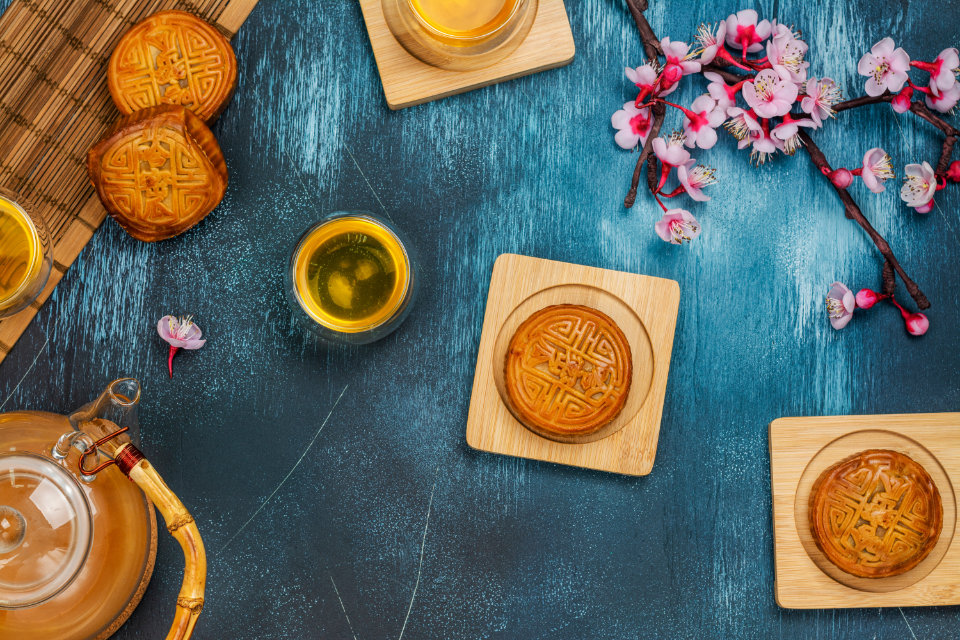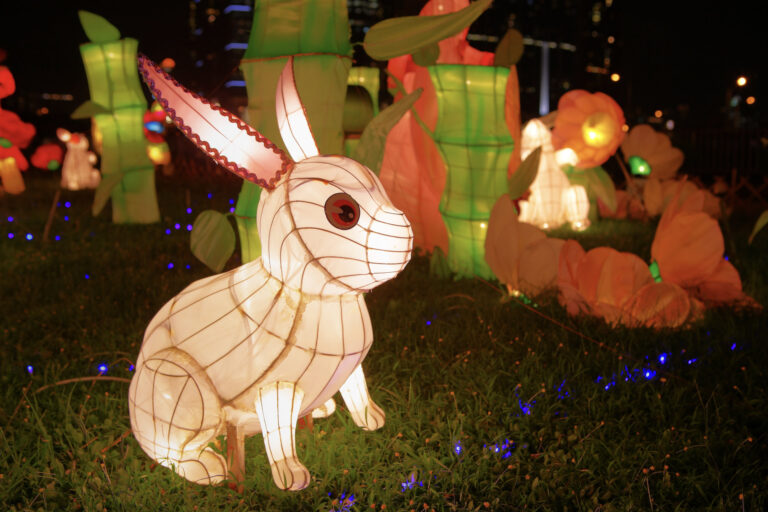The Mid-Autumn Festival, one of the most celebrated events in the Chinese calendar, encapsulates a blend of traditional rituals and contemporary festivity. As the full moon shines bright, it illuminates the path towards good luck, prosperity, and unity.
If you’re seeking ways to make the most of this auspicious event, you’ve come to the right place. This guide will walk you through how to celebrate the Mid-Autumn Festival, accentuating the practices that beckon good fortune.
Table of Contents
The Origin and Significance of Mid-Autumn Festival
The Mid-Autumn Festival, known as 中秋節 in traditional Chinese, holds a rich history, deeply ingrained in Chinese culture and tradition. Falling on the 15th day of the 8th month of the lunar calendar, when the moon is at its fullest and brightest, the festival symbolizes reunion and togetherness.
It is said to have originated from the Shang Dynasty (c.16th to 10th century BCE) as a harvest festival. It became an officially recognized celebration during the Tang Dynasty (618-907 CE), and its significance has grown since, with many traditions and customs developing around it.
In the context of Chinese traditional festivals, the Mid-Autumn Festival is second in importance only to Chinese New Year, also known as the Spring Festival. The Spring Festival is a celebration of the coming year and a farewell to the old. It’s a time for family reunions, much like the Mid-Autumn Festival, and it’s filled with traditions aimed at bringing good luck and dispelling bad luck.
On the other hand, the Dragon Boat Festival, held on the 5th day of the 5th month of the lunar calendar, is a commemorative festival, known for its dragon boat races and zongzi (sticky rice dumplings). It’s said to have originated from the act of people paddling out on boats to scare away fish and retrieve the body of the beloved poet Qu Yuan who drowned himself in the Miluo River.
While these three festivals – Chinese New Year, Dragon Boat Festival, and the Mid-Autumn Festival – have distinct origins and traditions, they all emphasize family reunion, remembrance, and a deep appreciation for life’s blessings.
As you prepare to celebrate the Mid-Autumn Festival, understanding its place in this trio of significant Chinese festivals provides a more profound insight into its cultural importance.
Preparations for Mid-Autumn Festival
Proper preparation for the Mid-Autumn Festival can set the tone for attracting good luck:
- Feng Shui Preparations: Ensure that your home is clean and clutter-free. A tidy space encourages positive energy flow. Position your furniture in a way that maximizes comfort and positivity.
- Choosing the Right Mooncakes: Mooncakes are an integral part of the celebration. The circular shape signifies unity and completeness. When choosing mooncakes, opt for those with auspicious symbols like the Chinese characters for longevity or harmony.
- Setting Up Your Lanterns: Lanterns are said to ward off evil spirits. Hang colorful lanterns around your home to attract good fortune and joy.
Key Rituals and Traditions for Good Luck
Certain rituals and traditions are believed to attract good luck during the Mid-Autumn Festival:
- Moon Gazing and Making Wishes: The practice of moon gazing while making wishes is thought to bring them to fruition. As you admire the moon’s beauty, silently make your wishes for good health, happiness, and success.
- Lantern Processions: Participate in lantern processions or host one with your family. This tradition is a symbol of dispelling darkness and attracting positive energy.
- Burning of Incense and Offerings: Pay respects to the moon by burning incense and making offerings such as fruits and mooncakes. This act of gratitude can help attract good luck.
Role of Mooncakes in Mid-Autumn Festival
Mooncakes, a Mid-Autumn Festival staple, carry great symbolic significance. They represent unity, wholeness, and the full moon.
Moreover, sharing mooncakes with family and friends is seen as a means of wishing them good fortune and longevity.
When gifting mooncakes, be mindful of the flavors and designs, as some may be more auspicious than others.

Family Reunion Dinners
The Mid-Autumn Festival is about togetherness. A family reunion dinner on this day is not just about the feast but also about attracting good luck.
Foods that are traditionally included for good luck are pomelos, duck, taro, and of course, mooncakes.
Mid-Autumn Festival Games and Activities
Traditional games like mooncake gambling and lantern riddles are not just for fun but are also believed to bring good fortune. They encourage participation, unity, and joy—factors that all contribute to good luck.
The Role of the Moon Goddess Chang’e
Chang’e, the Moon Goddess, plays a vital role in the Mid-Autumn Festival. According to legend, she ascended to the moon and remains there, signifying immortality and transcendence.
Paying respects to Chang’e can bring good luck, as it is a sign of respect towards tradition and divinity.
Feng Shui Tips for Mid-Autumn Festival
Incorporating Feng Shui practices during the Mid-Autumn Festival can further amplify the positive energies associated with this holiday.
Here are some tips to enhance luck, prosperity, and happiness during the celebration:
- Enhance the Moon Area of your Home: In Feng Shui, the moon represents Yin energy which is calming, healing, and nurturing. During the Mid-Autumn Festival, focus on activating the Southwest sector of your home – associated with the Moon and Yin energy – by placing symbols of the festival such as lanterns or mooncakes here.
- Balance of Five Elements: Try to incorporate the five Feng Shui elements – Wood, Fire, Earth, Metal, and Water – into your festival decoration. For instance, mooncakes (Earth) on a metal tray (Metal), next to a bowl of water (Water) with floating candles (Fire) and a plant (Wood) ensures a well-rounded presence of all elements.
- Use Lucky Colors: In Feng Shui, colors play a significant role in attracting positive energies. During the Mid-Autumn Festival, use colors that align with the energy of autumn and the Metal element associated with this season. White, gold, and silver are excellent choices for decorations, tableware, or clothing.
- Harmony in the Dining Area: The Mid-Autumn Festival is often celebrated with a hearty meal with family and friends. Ensuring the dining area is clean and well-lit helps to stimulate the flow of positive energy. Additionally, placing a round fruit like an apple or pear, symbolic of the full moon, in the center of the table can bring good luck.
- Outdoor Spaces: If you have outdoor space, try to make use of it during the Mid-Autumn Festival. Watching the moon outdoors while having a meal or snacks not only connects you with the nature but also invites fresh, positive chi into your life.
- Symbols of Prosperity: Incorporate symbols of prosperity in your decorations. You might use a three-legged frog, a powerful Feng Shui wealth cure, or hang coins tied with red ribbons to bring financial abundance.
- Moon Imagery: Images of the full moon are auspicious for this festival. Place pictures of the moon, use moon-shaped decorations, or even use dishes with moon imagery to celebrate the festival and attract good luck.
- Declutter: Just as with any celebration or new beginning, decluttering is an essential Feng Shui practice. It allows for the free flow of positive chi, bringing good luck and fresh opportunities.
- Activate Relationships: The Southwest sector is also related to love and relationships. You can enhance this area by placing pairs of items, such as two pink candles, which can help attract love or enhance existing relationships.
- Invoke the Power of the Moon: Place a bowl of water under the moonlight to absorb its yin energy. This moon-charged water can be used for cleansing or for watering plants, promoting growth and prosperity.
- Mindfulness: Lastly, remember that your energy impacts your environment and vice versa. Practice mindfulness, stay positive, and create a peaceful, harmonious atmosphere for the festival.
- By applying these Feng Shui tips, you can make your Mid-Autumn Festival not only an occasion of cultural significance but also a time to attract more luck, prosperity, and happiness into your life.
Embracing the Moonlight
The Mid-Autumn Festival is much more than just a celebration—it’s a season of unity, prosperity, and fortune.
By following the practices mentioned above, you can invite good luck into your life and enjoy this festivity to its fullest.
May the luminous full moon of the Mid-Autumn Festival bring you immense luck and joy.
What is the Mid-Autumn Festival also known as?
The Mid-Autumn Festival is also known as the Moon Festival, Harvest Moon Festival, or Zhongqiu Festival (中秋节).
When is the Mid-Autumn Festival celebrated?
The Mid-Autumn Festival is celebrated on the 15th day of the 8th lunar month, which usually falls in September or October on the Gregorian calendar.
Why is the mooncake significant in the Mid-Autumn Festival?
The mooncake is a traditional Chinese pastry that symbolizes unity and completeness. It is often shared among family and friends during the festival to signify reunion and togetherness.
What are some other traditions associated with the Mid-Autumn Festival?
Besides moon gazing and eating mooncakes, other traditions include lighting lanterns, dragon and lion dances, and offering sacrifices to the moon.
How is the Mid-Autumn Festival celebrated outside China?
he Mid-Autumn Festival is celebrated in many East and Southeast Asian countries, including Vietnam, Singapore, Malaysia, and the Philippines. The celebrations may vary by country but often involve mooncakes, lanterns, and family gatherings.
Can you celebrate Mid-Autumn Festival for good luck?
Yes, it is believed that certain practices during the Mid-Autumn Festival, such as making offerings to the moon and consuming specific foods like mooncakes and pomelos, can bring good luck and prosperity.
What does the rabbit symbolize in Mid-Autumn Festival?
In Chinese folklore, the rabbit is often associated with the moon and is seen as a symbol of selflessness and generosity. During the Mid-Autumn Festival, the image of the moon rabbit is often used in decorations and food presentations.



